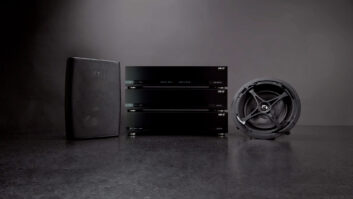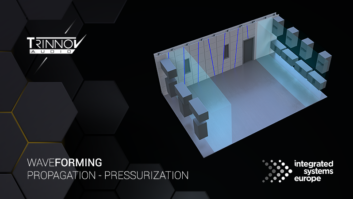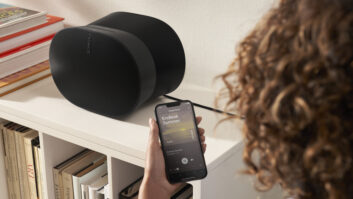Indulge me for a moment in an analogy…
As some of you know, I used to be a golf pro at a country club in the Bay Area, and at my best my handicap index was a 0.5 (not quite scratch). My club was the home course for the UC Berkeley golf team, and I had lots of opportunities to play with members of the Cal team, whose handicaps were in the +1 – 3 range. Though we did much of the same things — hit fairways, hit greens, hit putts — they just did it a little better, and their game was next-level, and at the end of the round they were 3 to 5 shots lower. But even as good as these guys were, they were not ready for the next level: the PGA Tour. The average Tour pro has a +5.4 index, and they just do everything better, day-in-and-out, regardless of the course or conditions. Sure, we’re all playing the same game, but no one would mistake me for a Tour pro.
Okay, this is where we start tying this analogy together…
When I started my personal AV journey, I had the flagship Yamaha receiver. Then I upgraded to a flagship Denon, then to a Marantz. These were all really solid units, but I knew there was better performance to be had. So, about 14 years ago, I switched from a receiver to separates, which I’ve steadily upgraded as new features and performance improvements hit, and my current solution is the Marantz AV8805. Make no mistake: this is a fantastic 13.2-channel processor.
But it’s not Tour level.
If you want to get into the rarefied air of owning the very best-of-the-best, then you need to step up to the next level of performance. And that is the Trinnov Audio Altitude16 processor.
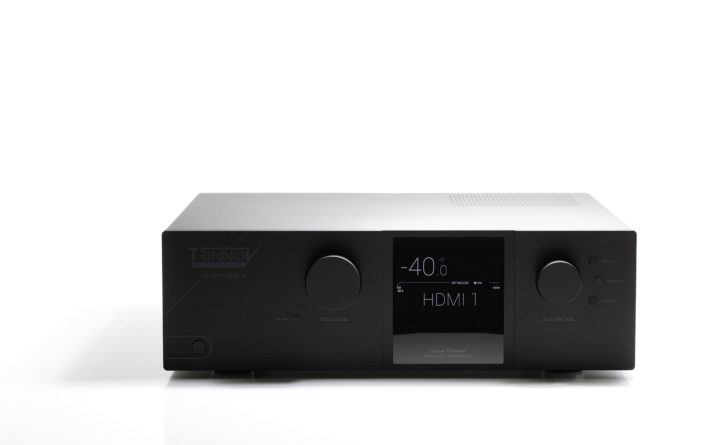
Trinnov Audio is a French company launched in 2003 whose name is derived from “Tri-Innovation,” which reflects the company’s constant and relentless focus to innovate and lead in the delivery of 3D audio.
The Altitude16 is actually the company’s entry-level processor, a pared-down version of its flagship Altitude32. However, the only thing “lacking” between the two units is the number of channels they can discretely process, with the Altitude16 maxing out at 20 channels compared to the 48-channel capability (when paired with the Altitude48EXT) of the Altitude32. For most installations, the Altitude16 will support any speaker layout you choose to employ.
In a nutshell, the Altitude16 is a purpose-built, fully optimized computer designed to handle any surround format currently available, and is software upgradeable to support any changes that may come, such as the DTS:X Pro and IMAX Enhanced formats.
What Trinnov is especially known for is its incredibly powerful loudspeaker/room Optimizer that utilizes the company’s unique, fully calibrated microphone and powerful room correction to deliver the most accurate, time aligned sound possible.
Reviewing the Trinnov has been on my bucket list for some time. I have stalked Trinnov user forums, sought out every demo at tradeshows, and read loads about it, but that’s not the same as having it and living with it. To say I was excited at the opportunity to review the Altitude would be an understatement.
Design
As the most expensive audio component to ever grace my home, I had high expectations for the Altitude to deliver a luxury experience from start to finish.
While the Trinnov team certainly takes care in boxing and packaging the unit to ensure its safe arrival — and cloaking the Altitude in a nice, protective black cloth bag — there is nothing overly special about the unboxing. (To be fair, hoping for an experience like opening the green, leather presentation box that accompanied my Rolex Submariner was probably overly optimistic on my part.)
Besides the power cord, rackmount ears, and remote control, the box also includes one of most thorough and well-written owner’s manuals I’ve ever encountered. Filled with pictures and graphics, the manual outlines the Altitude’s many features and capabilities in detail. At 158 pages, this is the kind of reference resource manual that should accompany a luxury product.
If you ordered the optional Optimizer microphone ($850), that will also be included in its own little pouch along with a lengthy microphone cable.
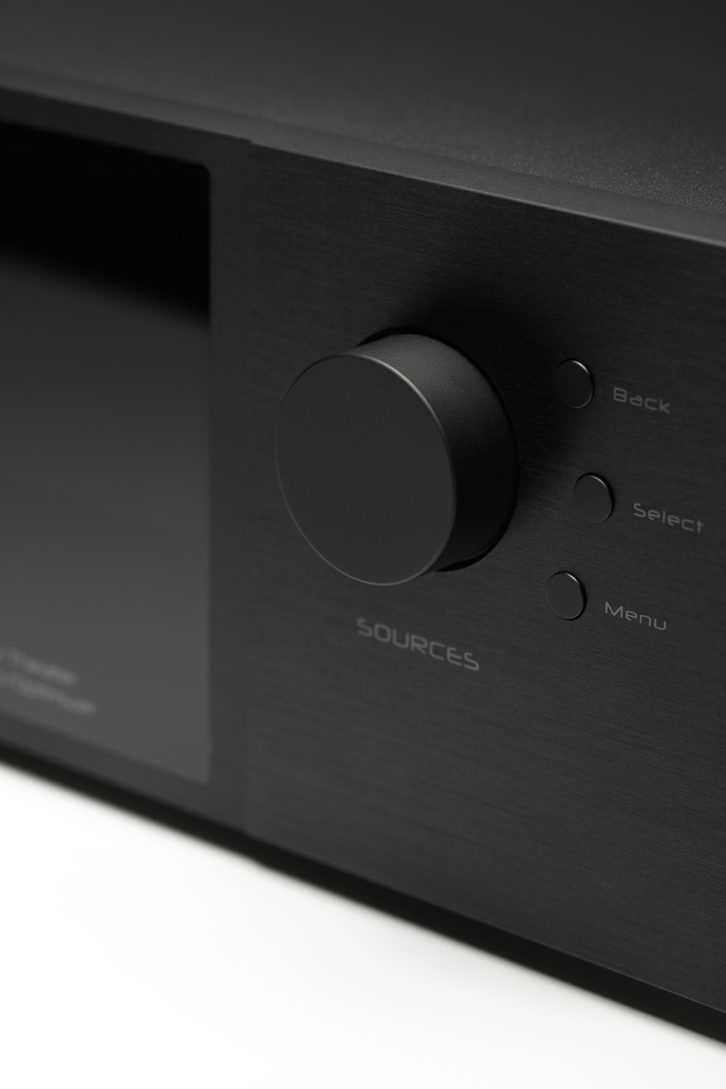
Removing the Altitude from the box, you get an immediate sense of its build quality. At just under 25 pounds, it has nice heft, with a solid front panel featuring well-machined, rounded edges. Part of this weight is due to the dual, separated power supplies for audio and processing to keep the noise floor down. The front panel has a sleek, minimalist design that manages to look both high-end and high-tech, with a large display screen that can be dimmed or defeated. Atmos snobs [raises hand] will love that the display screen provides real-time level meters that display output activity for all the channels.
The display is flanked by two knobs for volume and source, as well as four buttons for basic control. I’ll admit, I’m a snob for knob-feel, and while the volume knob has good turn, it doesn’t have the jewel-balanced precision of say a Krell or Steinway-Lyngdorf knob. Though, honestly, most users will probably never touch it. The knob does offer adjustment in .1 dB increments, giving you incredibly granular control over volume, which will appeal to audiophiles.
Also Reviewed by John Sciacca: Torus Power AVR-2 Elite 20 Power Transformer
Around back, you get a sense of the Trinnov’s computer-centric origins, with the lower-left of the back panel dedicated to PC connections like a mouse/keyboard, USB drives, and monitor connections. The top of the unit is reserved for the eight HDMI inputs, all fully 18 Gpbs HDMI 2.0/HDCP 2.2 compliant, along with two HDMI outs, the first capable of supporting eARC. The lower right half is packed with 16 XLR outputs for connecting to amplifiers. There are also two each coax and optical digital inputs, two analog inputs, one XLR and one RCA, an XLR input for the calibration microphone, an RS-232 connection, and five triggers — one in, four out.
Let me address any confusion over why it is called the Altitude16 while it can process 20 channels. Because the Altitude is driven by Trinnov’s powerful software — a highly-refined version of Linux that it has been optimizing for audio applications for nearly 20 years — the company is able to keep it current and cutting edge through updates. One example of this is a recent firmware roll-out allowing the Altitude’s two digital audio outputs — one coaxial, one Toslink — to be used to add four more audio channels. This requires using third-party outboard DACs, but it speaks to the company’s commitment to give users maximum capability and usability from their purchase.
Installation and Setup
My system is 7.3.6, so it fit right into the Altitude’s 16-channel processing wheelhouse without requiring external DACs to enable the additional channels. Since the Altitude was replacing my Marantz AV8805 — which was already wired to my Marantz amplifiers with XLR cabling — the install was pretty straightforward. I did need three XLR-to-RCA adapters to connect my existing subwoofers, but these were easily obtainable.
While I used my Marantz MM8077 amps for this review, it’s worth mentioning that Trinnov just released a new Amplitude16 amplifier as a perfect complement and companion to the Altitude. Beyond enormous 200 watts x 16 channels power — requiring two 20-amp power connections — this monster allows bridging any two channels to 800 watts. But the real trick is that the Amplitude is designed to match the gain of the Altitude and take advantage of its high-voltage output capabilities. By greatly lowering the Amplitude’s gain, it provides a significant noise floor reduction of 6 to 8 dB, making for a much quieter and more dynamic system.
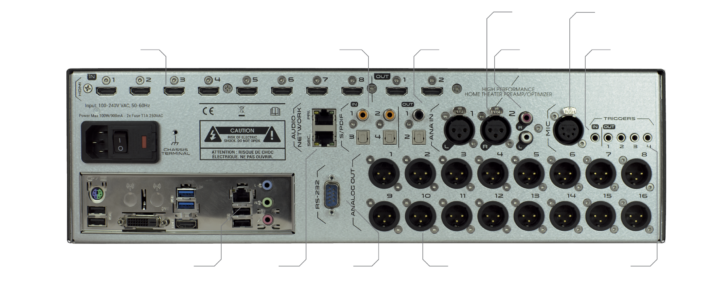
One thing immediately apparent compared to every other component I’ve ever installed is that the Trinnov’s connections are only labeled 1 through 16, with none of the usual “Center” or “Height 1 R” labeling instructing where to connect each channel. Instead, any output can be assigned to any channel.
Something else to keep in mind for your installs: numerous Trinnov owners, installers, and the company itself told me that using quality 3-meter HDMI cables for source components is the best practice. Apparently, shorter length cabling can lead to some dropouts and instability.
Once connections are made, it’s time to configure the Altitude. While this can be done by connecting a monitor, keyboard, and mouse to the PC board, most installers will use the Trinnov’s VNC (Virtual Network Computing) connection to do this. While this sounds fancy, in reality it meant just adding “/vnc.html” to the Altitude’s IP address in my browser. Here you have access to all of the settings, configurations, and adjustments the Altitude offers. But even having set up hundreds of receivers in the past, the Altitude’s numerous menus, screens, options, and layouts were daunting and, frankly, a tad confusing.
Reminder: The Kaleidescape and Trinnov partnership package is in effect until December 31, 2022. With the purchase of a Trinnov Altitude16 or Altitude32 Processor and a Kaleidescape Terra + Strato C, customers receive a Trinnov-curated package of 4K Dolby Atmos and DTS:X mastered titles offered at no additional charge on the Kaleidescape system.
While I’m sure I could have waded through the manual and eventually struggled my way through the basic configurations, I took the easy way out, which was to let Trinnov do the work. If you decide to become a dealer, however, you — and your installs! — will definitely benefit from Trinnov’s training, as well as the company’s online support documents. This also brings up another unique aspect about the Trinnov; while many of its products are sold and installed by the professional channel, Trinnov says it is finding more ultra-high-end enthusiasts are making purchases. Trinnov has two managing directors that handle the U.S. territory — Chuck Back in the West and Jon Herron in the East — and these gentlemen will avail themselves to assist dealers and users in setup.
Chuck was kind enough to remote into my Altitude and walk me through the menu screens and setup process, using me as his eyes, ears, and hands as needed. While my basic setup and calibration only took about two hours, a full Trinnov calibration would take much longer. My friend Adam Pelz of Bespoke Cinemas is one of the top Trinnov calibrators in the world, and he says he typically allots two to three days for a calibration depending on the system’s size and complexity, often spending an entire day on bass calibration alone. Considering the price of the Altitude, along with its power and capabilities, hiring a calibrator like Adam who is intimately familiar with how the Altitude works and what it can do is certainly worth considering.
While there is no way to even mention all of the things the Trinnov setup menu offers, I’ll mention two features that stood out to me.
When assigning audio channels, you are presented with an array of choices covering every possible option each surround format supports. This means 40 different speaker positions for Dolby, 14 for Auro3D, and 30 for DTS. Plus, you can assign channels to be different speakers depending on the format. For example, my center pair of height speakers are processed as Left and Right Top Front when watching content encoded in Dolby or DTS, but as the Voice of God channel for Auro3D. You can also array speakers together and independently control speakers that are mono, bi-, tri-, or even quad-amped.
The Altitude offers an incredibly flexible array of bass management options. Beyond letting you choose between three different filter types, multiple slope options, and the exact frequency of the filter for every speaker, you can also assign the bass routing for every speaker. Say you want all the speakers on the left side of the room to route to the subs on that side, or you want a ceiling speaker to route bass to the nearest larger speaker, or rear channels to use subs in the back of the room, or… You get the idea. You can also individually set the gain and polarity of each sub for each speaker.
While the Altitude offers the ability to manually create PEQ filters and EQ curves for each speaker, that is just the warm-up act for the main show, which is the Trinnov Optimizer. Using the optional 3D microphone, you unlock the Altitude’s powerful room correction features. Of course, this is no ordinary microphone, and more a “capsule” employing four microphones in a tetrahedral arrangement that resembles something the Interrogation Droid from Star Wars might wield. These four elements capture sound in 3D space, with the ability to precisely locate the speakers within 2 degrees of azimuth and elevation, and 1 cm of distance. The Altitude then processes these measurements, performing time, frequency, and acoustic analysis for every speaker, and applying powerful room correction to make the speakers sound as natural, accurate, and cohesive as possible.
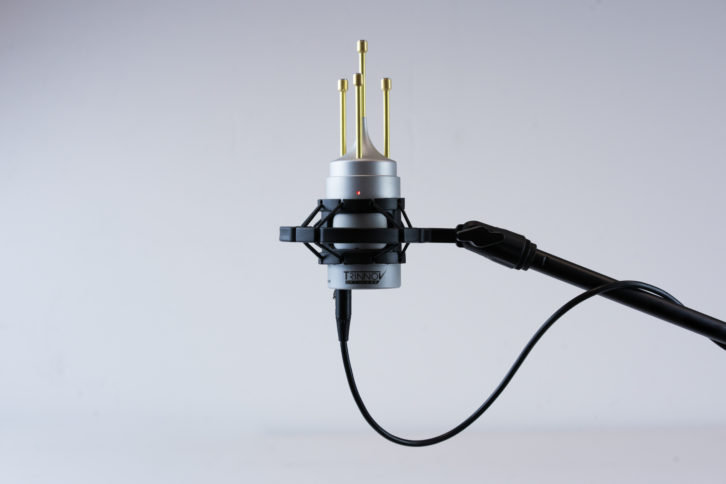
More than 10 measurement positions can be taken, and you can “weight” a position, telling the processor to place more emphasis on correcting the “money seat” than, say, a location rarely used. And instead of merely using an averaged response out of multiple measurement points, the Trinnov “Multi-point Algorithm” can take every single measurement point into account. These measurements can be saved into one of 29 easily recalled presets. Say you have one preset designed for solo viewing, another for a couple, and another for a roomful of guests. Of course, each preset also has loads of individual additional configuration parameters that are easily recalled.
For my setup, Chuck ran one calibration where my three subwoofers were individually measured, and then another where they were measured together. (For the record, I preferred the bass performance from the individual measurements.)
After the calibration, you create a target curve, and then you are presented a slew of graphs showing before and after results and the filters applied for each speaker for a variety of things like amplitude, phase, and impulse. You can also see how the Trinnov “sees” your speakers in a 3D space compared with the ideal speaker locations.
Another of the Altitude’s cool “tricks” is the Dolby Atmos object viewer and level meters, where you can see exactly what is happening in real-time on each channel. You’ll never again have to wonder if that movie just seemed like nothing was happening overhead — you can definitively see exactly what is happening.
Honestly, this isn’t even scratching the surface of what the Trinnov can do. But the key takeaway from this is that if there is a configuration, setting, adjustment, filter, or tweak available, the Altitude offers it, enabling you to get any speaker system to perform its absolute best in any room. For the installer or end-user looking to wring that last .1 percent of performance from a system, the Altitude can get you there.
Performance
Before I dig into the performance, a couple of quick comments on interacting with the Trinnov. The unit ships with a really basic remote control that doesn’t include backlighting or discrete access to much of anything and is really useful only for toggling selections or adjusting volume. Honestly, this isn’t a big deal. If you’re dropping Trinnov money, you’re going to have a control system, and Trinnov has well-written drivers for all the major players. In my case, I added the Control4 IP driver and it worked flawlessly and gave fast access to all of the Altitude’s settings, including recall of the 29 presets. I do wish there were a control app for making quick adjustments or checking something.
As the Altitude is essentially a computer, startup from full off can take a couple of minutes. Alternatively, the Control4 driver let you put the Altitude into “Stealth” mode on “Room Off,” which sets it to an unused input, turns the front panel display off, and mutes it. The benefit here is that it is always ready for instant use. As Trinnov recommends a periodic power cycle to record the logs, the driver offers an option for how often and when to reboot the Altitude. These are simple things, but they just speak to the care and design that has gone into this.
The Altitude also has no OSD (though a basic version is slated for later 2022) and no video processing. While you can monitor the status of video passing through the Altitude via the VNC connection, it does nothing good or ill to the picture.
As mentioned, the Altitude’s decoders operate in the software world instead of on hardware (IC chips) like most other systems. (According to Trinnov, “We are the only people who run the original/native code for Dolby, DTS, and Auro, as opposed to a somewhat-simplified version that is designed to run on an inexpensive IC chip. So, the quality of the decoding is precisely what it was designed to be rather than a close approximation.”) While this 64-bit floating-point processing is very powerful, precise, and upgradeable, the downside to it is that the software needs to “load” when the Altitude sees a new codec. What this means is there is a 2- to 3-second delay (and some relay clicking) at the very start of a program. For a movie, this is almost unnoticeable as it happens prior to the title card, but for music encoded in Atmos or Auro, or streaming programming like Hulu that goes from the content to ads, you can end up missing a couple of seconds of sound.

Performance-wise, what really stood out to me over and over was that sounds just had more clarity and definition, and the tracking and localization of sounds was far more precise. For example, there were multiple instances in Ambulance where a specific sound — say a metal grinder or garage door — very clearly moved off screen, up, and to a very specific point overhead. Or in Moonfall — perhaps one of the most bombastic Atmos titles to date — when the Earth is pummeled by chunks of the moon or when the nanobot aliens reach out overhead, you can clearly follow and pinpoint each location. Rewatching Top Gun to get ready for Maverick, the sounds of jets streaking overhead or ripping past you through the side of the room was far more engaging and dynamic. And it wasn’t just big-budget, Atmos-encoded films either. During tribal councils in the TV show Survivor, the sounds of thunder would roll overhead from the front to back of the room. Music listening also just had more resolution, letting you appreciate the small, subtle details.
Beyond the “big” effects, the Altitude just did a better job transforming the room into another environment. The spaciousness of other sounds and the sense of air, be it the outdoors, or the close quarters of an inside room, or the deck of a spaceship, just felt more open and sonically engaging. Bass was also tighter, sharper, and had more authority, focus, and punch.
You have the ability to turn the Optimizer calibration fully on/off — or individually turn off acoustic correction, level alignment, and/or delay alignment — and it is instantly apparent the sonic wizardry the Altitude is performing. With Optimizer defeated, sounds just get a bit hazier and more indistinct, but after re-engaging the processing, they sparkle and shine.
Another of the Trinnov’s powerful tricks is the 3D remapping, which is able to “relocate” sounds from speakers that are less than ideally placed. I’ll freely admit that I have a less-than-ideal room, but with the Altitude, watching things like Halo on Paramount+ I clearly heard sounds positioned at ear level off to the sides and in the back corners of my room where there are no speakers. The cohesion and panning of sounds as they travel between speakers is truly unlike anything I’ve heard in my room.
Related: Selling Luxury
If you’ve read between the lines up to this point, you’ve probably gathered that I’m all but gushing over the Altitude. After years of stalking, I’m pleased to say the Altitude totally lives up to the hype and its reputation. Everything played through it just sounds more. The clarity, the detail, the fine resolution, the spaciousness… It’s as if every sound passing through the Altitude is carefully and lovingly polished and detailed before being passed onto the speakers. I think the best compliment I can give it is that it makes me want to go back and rewatch old favorites to hear just how great they can sound!
If you or a client want nothing but the best, your search is over. To quote Willy Wonka, “Don’t forget what happened to the man who suddenly got everything he always wanted… He lived happily ever after.”
860-833-4400 / 310-572-1070 / Trinnov.com
Kudos: Absolutely lives up to the hype; top-notch flexibility, configuration, and performance; enables any speaker system to sound its very best in any room
Concerns: It’s expensive and complex; ideally a Trinnov-certified calibrator would perform optimization; audio delay when switching formats
Product Specs:
- Provides up to 20 discrete channels of decoding
- Supports all major (Dolby, DTS, IMAX Enhanced, Auro-3D) audio formats and speaker layouts
- Automated loudspeaker/room Optimizer with optional 3D microphone ($850)
- Exclusive audio 3D remapping corrects for imperfect speaker placement
- Extensive and flexible bass management solutions
- Powered by Intel multi-core, hyper-threaded processor
- Full remote access and support to any Internet-connected processor
- Roon enabled
- Connections: Inputs: (8) full 18Gbps HDMI 2.0/HDCP 2.2 inputs, (2) Toslink optical digital, (2) coaxial digital, (2) analog inputs (1 XLR, 1 RCA), mini-jack trigger, XLR microphone, RS-232, (3) Gigabit RJ45 (two reserved for future audio network, one for network connection); Outputs: (2) full 18Gbps HDMI 2.0/HDCP 2.2 (1 supporting eARC), (16) XLR analog outputs, Toslink optical digital, coaxial digital, (4) mini-jack triggers, detachable power cord; PC Connections (DVI/HDMI/VGA, (2) USB 2.0, (2) USB 3.0) PS/2 Keyboard/Mouse)
Dimensions:
17.25 x 5.5 x 17.94-inches (W x H x D); 3U rack height; 24.9 pounds


